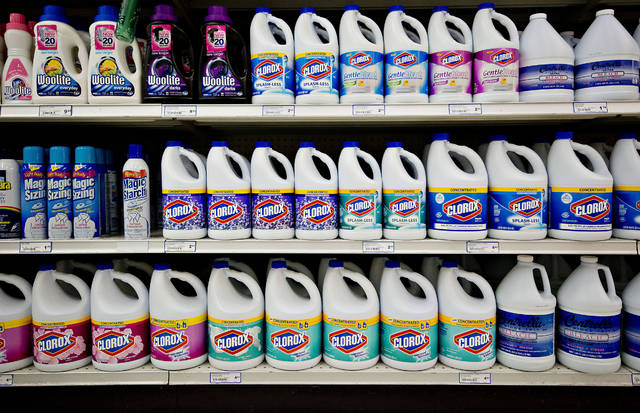Bleach isn't so scary if you know how to use it correctly
There is dissension in laundry rooms and grocery store cleaning aisles everywhere. For some of us, when it comes to whitening and disinfecting laundry and certain areas of our home, common household bleach is a wonder product. To others, bleach is a hazardous chemical. To get to the hard truth about chlorine bleach, I turned to the experts.
Here is what I learned.
Thomas Benzoni, assistant professor and doctor of osteopathic medicine at Des Moines University, who co-authored an article on common household bleach for the National Center for Biotechnology Information, says that “bleach used correctly and lightly around the house to treat a surface on which you’ve cut poultry, for example, is good because it disinfects, but spilling some on your favorite holiday sweater is bad.”
But more alarming than a possible laundry mishap would be mixing bleach with other household cleaners, especially toilet bowl cleaners and ammonia. Such a reaction would result in the release of chlorine gas, an asphyxiant, which can prove fatal if it comes in contact with your eyes or lungs. Benzoni says any cleaner should be allowed to dry completely before applying a bleach solution. This will help to minimize the chance for exposure to a potentially toxic reaction.
To clean and disinfect a surface, you first need to wash it with soap and water to remove dirt and debris, let it dry, then treat it with diluted bleach — at most 11⁄2 cups bleach per gallon of water, Benzoni advises. After applying bleach, let the area sit for about 10 minutes, then wipe it with clean water. He also recommends that you wear gloves when using bleach and ventilate the area as much as possible because bleach solutions can irritate your eyes, skin and respiratory tract.
What’s safe to bleach and what’s not? Mary Gagliardi, Clorox’s in-house cleaning and laundry expert, says to never use bleach when washing spandex, wool, silk, mohair or leather; regardless of their color, bleach will ruin them. So, always check your clothing labels. As for colored fabrics, some are colorfast to bleach; it depends on what dye was used to color the fabric and how it was applied.
The biggest mistake people make when adding bleach is using the wrong amount.
“You need to adjust the amount of bleach you add along with your detergent, based on the size of your load and the soil level,” Gagliardi says. Add ½ cup for a normal load with an average soil level and 1 cup for an extra-large and/or heavily soiled load. To wash sheets, Gagliardi says, select the heavy-duty cycle and hot water temperature, use a good-quality detergent and then add ½ cup bleach.
Gagliardi shares one of her favorite uses for bleach: Add ¼ teaspoon bleach to a quart of water in a vase, then add flowers. The bleach will fight bacterial growth and keep the flowers fresh.
Elizabrth Mayhew, a “Today” show style expert and former magazine editor, is the author of “Flip! for Decorating.”
Remove the ads from your TribLIVE reading experience but still support the journalists who create the content with TribLIVE Ad-Free.

